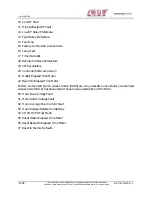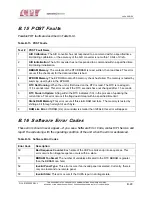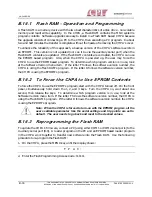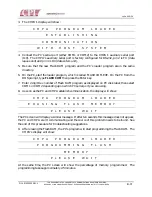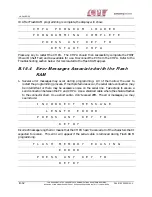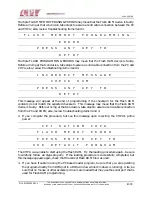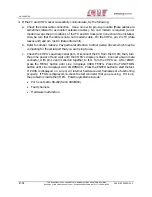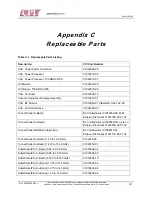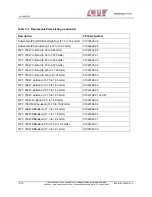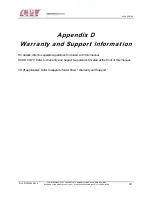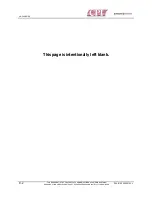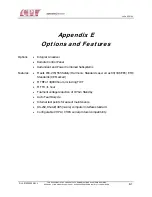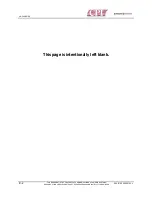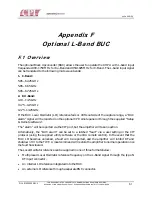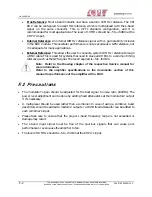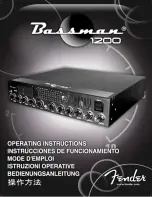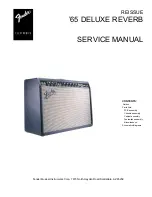
CHPA SERIES
F-2
THIS
DOCUMENT
IS
THE
PROPERTY
OF
COMMUNICATIONS
&
POWER
INDUSTRIES.
REPRODUCTION
OR
RELEASE
WITHOUT
EXPRESS
PERMISSION
IS
STRICTLY
PROHIBITED
D
OC
.01023245
R
EV
.L
•
Mux Reference: Most L-band modems now have a built-in 10 MHz reference. The CPI
BUC can be configured to accept this reference, which is multiplexed with the L-band
signal on the same connector. This is CPI’s standard configuration, and it is
recommended for most applications. The level of 10 MHz should be –5 to +5 dBm at the
KHPA’s input.
•
Internal Reference: An internal 10MHz reference signal with
±
1 ppm stability includes
in the BUC module. This oscillator performance is not as precise as a GPS reference, but
it is adequate for many applications.
•
External Reference: This allows the user to connect a system 10 MHz reference through
a BNC cable. This is used for systems that need to slave all KHPAs to a common timing
reference, such as the GPS signal. The level required is –5 to +5 dBm.
Note: Refer to the Drawing chapter of the respective Service manual for
more information.
Refer to the amplifier specifications in the documents section of this
manual for performance of the amplifier with a BUC.
F.2 Precautions
•
The modulator’s gain should be adjusted for the best signal to noise ratio (-60dBc). The
power level adjustment can be done by adding fixed attenuators at the modulators’ output
if it’s necessary.
•
A multiplexer should be used rather than a combiner. In case of using a combiner, band
pass filters should be added to modems’ output or a 10 dB fixed attenuator can be added to
each combiner’s input.
•
Please take care to ensure that the proper L-band frequency range is not exceeded or
damage may result.
•
The L-band input signal must be free of the spurious signals that can cause poor
performance or even cause the amplifier to fail.
•
The level of 10 MHz should be –5 to +5 dBm at the KHPA’s input.

